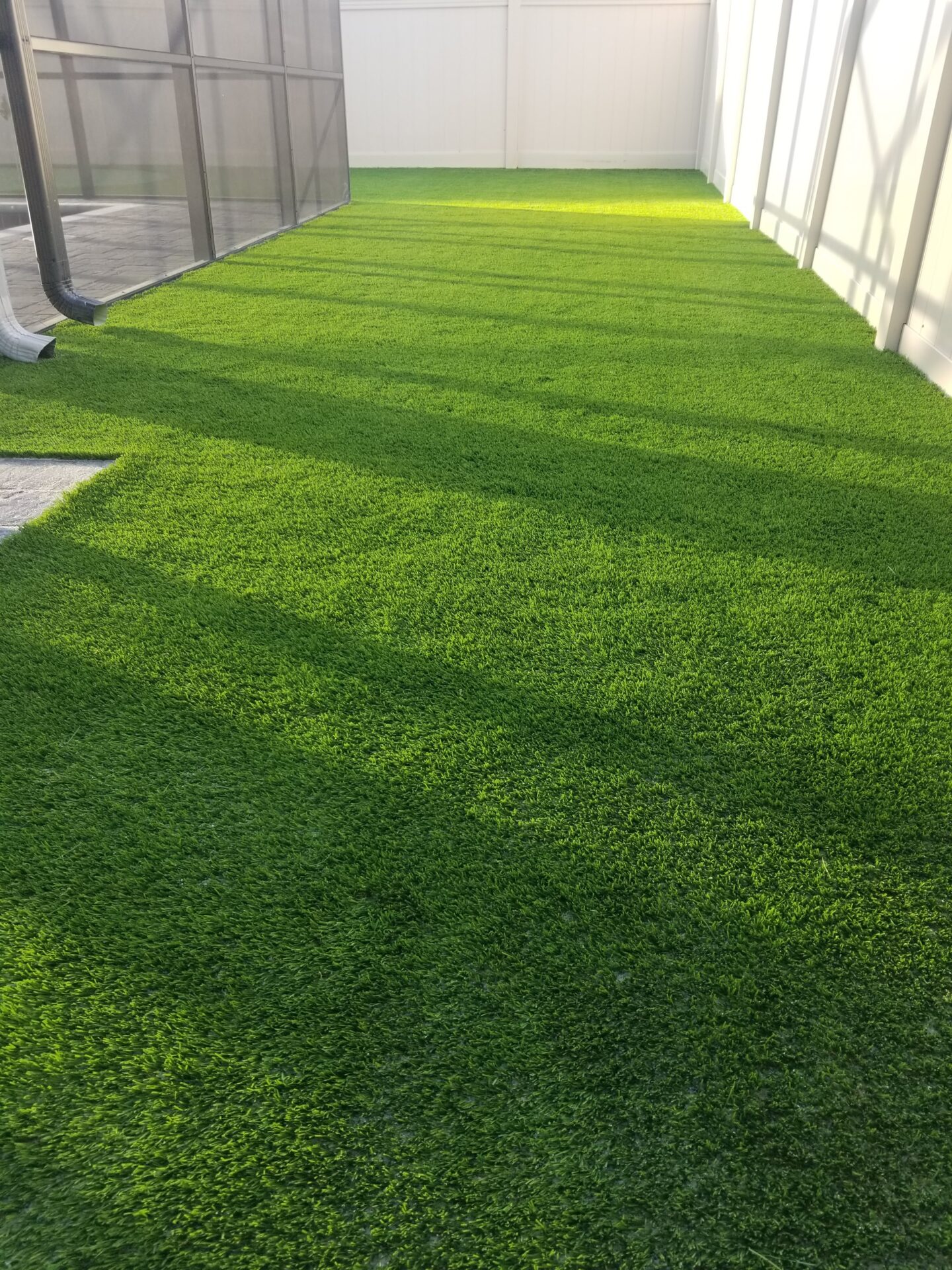In recent years, synthetic turf has gained popularity as a practical and sustainable alternative to natural grass. Whether you’re a homeowner looking to transform your backyard or a business owner seeking a low-maintenance outdoor solution, synthetic turf installation offers significant environmental advantages that go beyond aesthetics. From reducing water usage to eliminating harmful chemicals, here are the environmental benefits of synthetic grass and why it’s a smart, eco-friendly choice for your property.
1. Water Conservation with Synthetic Turf
One of the most significant environmental benefits of synthetic turf installation is its ability to conserve water. Natural grass requires frequent watering, especially in warmer climates, leading to excessive water consumption. According to the Environmental Protection Agency (EPA), outdoor water usage can account for up to 30% of a household’s total water use, with a significant portion going toward lawn maintenance.
By choosing water-efficient synthetic grass, you eliminate the need for watering altogether. This helps reduce water consumption, conserve precious resources, and lower your water bills. For regions prone to drought or where water conservation is a priority, synthetic grass installation for eco-friendly landscapes provides an ideal solution for maintaining a lush, green lawn without relying on excessive irrigation.
2. Eliminating Harmful Pesticides and Fertilizers
Maintaining a healthy natural grass lawn often requires the use of fertilizers, pesticides, and herbicides to keep it looking green and free from pests. These chemicals can have harmful effects on the environment, including water contamination, soil degradation, and damage to local ecosystems. Runoff from these chemicals can seep into nearby rivers and lakes, negatively impacting wildlife and water quality.
Synthetic turf installation eliminates the need for these harmful chemicals. Once installed, low-maintenance synthetic grass stays green and vibrant without the use of pesticides or fertilizers. This not only protects the environment but also ensures a safer outdoor space for your family and pets. By reducing the use of toxic chemicals, you’re contributing to a healthier, more sustainable environment.
3. Reduced Carbon Footprint
Maintaining a natural grass lawn typically requires regular mowing, trimming, and edging, all of which involve gas-powered lawn equipment. These machines emit carbon dioxide and other greenhouse gases, contributing to air pollution and climate change. In fact, gas-powered lawn mowers produce high levels of pollution, with the EPA estimating that a single gas-powered mower emits as much pollution in an hour as 11 cars.
By opting for synthetic turf installation, you eliminate the need for gas-powered equipment, significantly reducing your carbon footprint. Since artificial grass doesn’t require mowing or trimming, you’ll contribute to cleaner air and less noise pollution. For environmentally-conscious homeowners, sustainable synthetic turf for low-maintenance yards offers a simple way to reduce your lawn care’s environmental impact.
4. Preventing Soil Erosion and Runoff
In areas with heavy rainfall, soil erosion can become a significant environmental issue, especially on sloped landscapes. Natural grass lawns can struggle to absorb large amounts of water during storms, leading to soil erosion, runoff, and flooding. Artificial grass for erosion control provides a stable surface that helps prevent soil erosion by allowing rainwater to drain efficiently without washing away soil.
Modern synthetic turf systems are designed with advanced drainage technology that allows water to pass through quickly, preventing puddles and reducing runoff. This helps keep your landscape intact, even during heavy rains, while contributing to the preservation of natural resources. Installing synthetic grass to combat soil erosion offers an environmentally friendly solution for homeowners in areas prone to heavy rain or flooding.
5. Long-Lasting Durability and Reduced Waste
Another major advantage of synthetic turf is its durability and long lifespan. Unlike natural grass, which may need to be reseeded or replaced regularly due to wear and tear, synthetic grass is designed to withstand heavy use without deteriorating. High-quality artificial grass for long-lasting landscapes can last for 15-20 years or more, providing a reliable, eco-friendly alternative to natural lawns.
This long lifespan reduces the need for frequent replacements, which in turn minimizes waste. Instead of replacing grass, fertilizers, or lawn care products each season, you can enjoy a low-maintenance yard that lasts for years, cutting down on materials and waste sent to landfills. Eco-friendly synthetic turf installation offers a sustainable solution that contributes to reduced waste over time.
6. Promoting Biodiversity in Local Ecosystems
Traditional lawns can create monocultures, where only one type of grass or plant dominates the landscape, which can have negative effects on local biodiversity. These monocultures often require extensive maintenance, including chemical treatments that can harm beneficial insects, birds, and other wildlife.
By replacing natural grass with synthetic turf for environmentally-conscious landscaping, you can reduce the impact of monocultures on the environment. Additionally, synthetic turf frees up space for adding native plants, trees, or shrubs to your yard, which can support local wildlife and promote biodiversity. Sustainable landscaping with artificial grass encourages a healthier balance of plant and animal life in your outdoor space.
7. No Need for Irrigation Systems
Installing an irrigation system to maintain a natural grass lawn requires significant time, money, and water. In contrast, synthetic turf installation eliminates the need for costly irrigation systems, further contributing to water conservation and reducing the energy consumption associated with running and maintaining such systems. This makes synthetic turf installation for water-saving landscapes a wise choice for both homeowners and businesses looking to make eco-friendly improvements to their outdoor spaces.
Conclusion
Choosing synthetic turf installation for your home or business not only enhances the appearance of your outdoor spaces but also offers a range of environmental benefits. From conserving water and reducing the use of harmful chemicals to lowering your carbon footprint and promoting local biodiversity, environmentally-friendly synthetic grass is a sustainable and practical solution for modern landscaping.
Whether you’re looking to save on maintenance, protect natural resources, or create a greener, more sustainable outdoor environment, installing synthetic turf is a smart, eco-conscious choice that benefits both your property and the planet.
